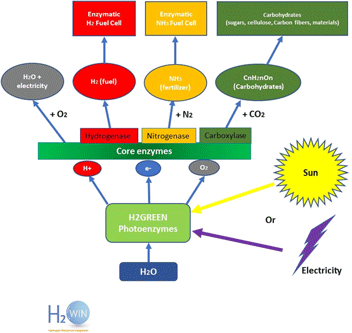Article contents
Sustainable integration of human activities into the global ecosystem
Published online by Cambridge University Press: 10 September 2020
Abstract

The sustainable integration of human activities into the global ecosystem is discussed, pointing out fatal anthropogenic heat as a major ecological problem and proposing global technical and economical solutions.
For human sake, we must get out of the “thermal age” and implement the “electroprotonic era” as soon as possible. Contrary to thermal power, electroprotonic is sustainable and can be produced by photoenzymatic systems, a cheap way to produce hydrogen (H2) or ammonia (NH3). We can accelerate the advent of this new era if we re-integrate external costs generated by thermal energies into their final prices. The author is leading the H2GREEN project in Belgium as an entrepreneur for more than a decade, which develops the photoenzymatic production of dihydrogen from water. The aim of the H2GREEN project is to contribute to the launch of a low-cost, renewable Hydrogen-based local economy as an energy carrier. Among the difficulties of this launch, the most important is certainly the lack of competitiveness due to the unfair competition of carbon products that externalizes their costs (CO2, oil spills, lethal pollution, armed conflicts, political oppression, foreign dependence, etc.).
- Type
- Perspective
- Information
- Copyright
- Copyright © The Author 2020, published on behalf of Materials Research Society by Cambridge University Press
Footnotes
H2WIN – Hydrogen to Worldwide INtegration – is a private company developing a hydrogen bio-generator: H2GREEN – H2 Generation by REnewable ENergy – which, for a low investment cost, will enable hydrogen to be produced locally with a high yield from water and light (sun or electrical) thanks to an enzymatic system inspired by nature (Biomimicry). The author is a collaborator of the University of Liège not as an independent academic scientist, but a private-sector entrepreneur.
References
- 2
- Cited by



